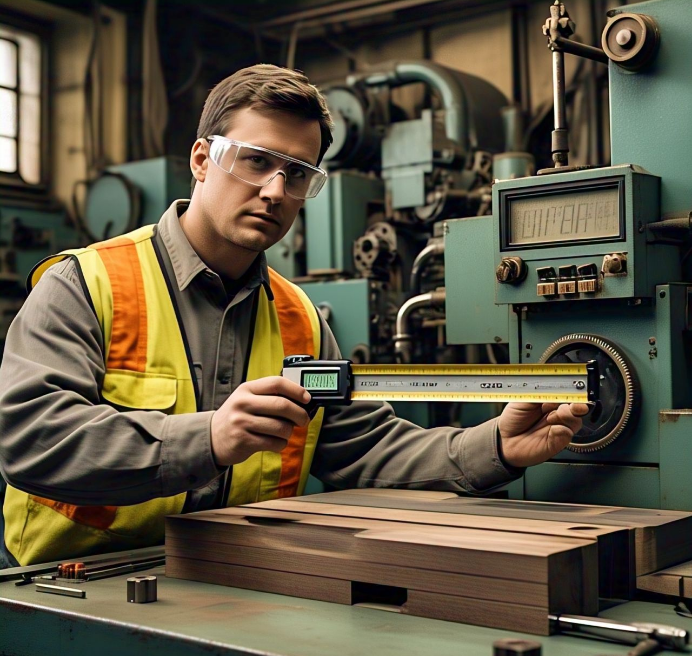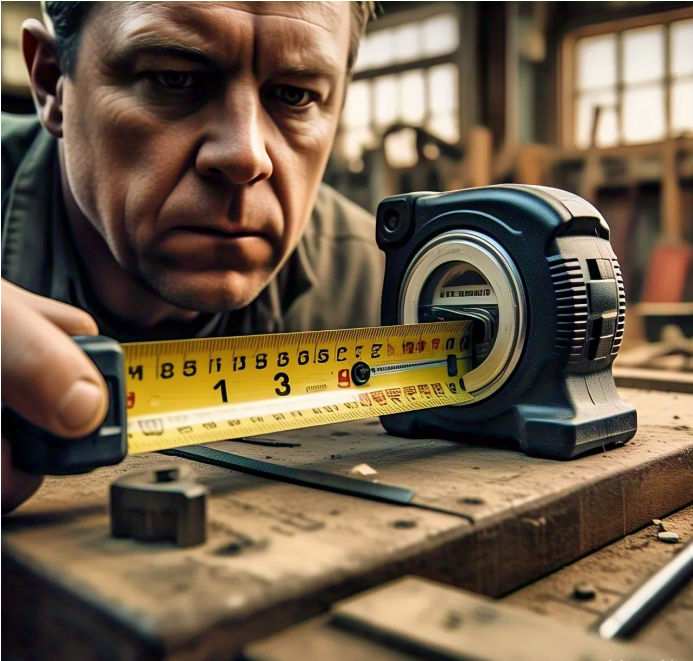Measuring Tool: The Key to Perfect Measurements Every Time

A Measuring Tool helps you find the exact size, length, weight, or temperature of things. Whether you are building something, cooking, or even checking the weather, a measuring tool makes sure you get the right numbers. From rulers and weighing scales to thermometers and speedometers, these tools are everywhere in our daily lives.
Using the right measuring tool is important because small mistakes can lead to big problems. Imagine baking a cake with too much flour or building a table that is too short! That’s why having good measuring tools and knowing how to use them correctly is very important. In this blog, we will explore different types of measuring tools and how they help us in different tasks.
What Is a Measuring Tool and Why Is It Important?
A measuring tool helps people find the correct size, length, weight, or volume of an object. These tools are used in many areas like construction, cooking, science, and even health care. Without accurate measurements, many tasks would be difficult or impossible.
Getting the right measurement is important for making things fit properly. If a builder cuts wood the wrong size, a house may not be safe. If a chef uses too much salt, the food may taste bad. That’s why using a good measuring tool is necessary.
Many measuring tools are simple, like rulers and thermometers. Others are advanced, like digital calipers and laser measuring devices. Each tool is made for a specific job, and choosing the right one helps people work better and faster.
A good measuring tool also helps reduce mistakes. When measurements are correct, work is easier, and the final result is much better. Whether you are fixing a car or sewing clothes, the right tool makes a big difference.
Different Types of Measuring Tools You Need to Know
There are many kinds of measuring tools, and each one has a special purpose. Some tools measure length, while others check weight, temperature, or pressure. Knowing about these tools helps in choosing the right one for each task.
1. Length Measuring Tools
- Rulers and tape measures help measure small and large distances.
- Calipers and micrometers are used for very precise measurements.
- Laser distance meters measure large spaces quickly and accurately.
2. Weight and Volume Measuring Tools
- Weighing scales check the weight of food, luggage, or even body weight.
- Measuring cups and spoons are used in cooking to measure liquids and powders.
- Beakers and pipettes help scientists measure liquids in labs.
3. Temperature and Pressure Measuring Tools
- Thermometers measure body temperature, room temperature, and more.
- Barometers help predict the weather by measuring air pressure.
- Pressure gauges are used in industries to check gas or liquid pressure.
Each measuring tool has a unique use, and picking the correct one is important for accurate results.
How to Choose the Right Measuring Tool for Your Work
Picking the best measuring tool depends on what you need to measure. Some jobs require simple tools, while others need high-precision instruments.
First, think about what you are measuring. If you need to measure a long distance, a tape measure or laser distance meter is the best option. If you are measuring tiny objects, calipers or micrometers work better.
Next, decide between digital and manual tools. Digital tools give quick and exact results, but manual ones can be cheaper and easier to use. A digital kitchen scale, for example, gives a precise weight, while a manual one might not be as accurate.
Finally, consider the environment. If you work outside, choose a measuring tool that can handle different weather conditions. Some tools are waterproof or shockproof, making them last longer.
Using the right tool makes measuring easier, faster, and more accurate. Choosing wisely helps avoid mistakes and saves time.
Digital vs. Manual Measuring Tools: Which One Is Better?

Measuring tools come in two types: digital and manual. Each has its own benefits and is useful for different situations.
Manual tools, like rulers and measuring tapes, are simple to use and do not need batteries. They are also more affordable and work well for basic tasks. However, they may not always give the most accurate readings, especially for very small measurements.
Digital measuring tools, like laser distance meters and electronic calipers, give exact results quickly. They are great for professional work that needs high accuracy. The downside is that they can be expensive and need power to work.
Choosing between manual and digital depends on your needs. If you need quick and exact results, digital tools are the best. But for everyday use, manual measuring tools are often enough.
Common Mistakes People Make When Using a Measuring Tool
Many people make mistakes when using measuring tools, which can lead to wrong results. These errors can affect construction, cooking, and even scientific research.
One common mistake is not using the tool correctly. For example, holding a ruler at an angle can give the wrong measurement. It is important to use the tool properly for accurate results.
Another mistake is not checking the tool before using it. A damaged measuring tape or a broken scale can give false readings. Always check the tool to make sure it is in good condition.
Some people also forget to convert units correctly. If a recipe asks for grams but you measure in ounces, the food may not turn out right. Double-checking units helps avoid confusion.
By avoiding these mistakes, you can make sure your measurements are always correct. This leads to better work and fewer problems.
Top 10 Measuring Tools for DIY and Home Projects
Having the right measuring tools at home can make DIY projects easier and more successful. Some tools are useful for simple tasks, while others help with more advanced work.
Must-Have Measuring Tools for DIY Projects:
- Tape Measure – Measures length and height for furniture and walls.
- Ruler – Helps with small, precise measurements.
- Level – Ensures shelves and frames are straight.
- Weighing Scale – Useful for baking and portioning food.
- Thermometer – Measures temperature for home and cooking.
- Caliper – Checks small and detailed measurements.
- Moisture Meter – Helps find damp areas in walls.
- Multimeter – Measures electricity in wires and devices.
- Laser Distance Meter – Quickly measures room dimensions.
- Angle Finder – Helps in cutting and fitting corners correctly.
These tools make home projects easier and more accurate. Having them on hand can save time and effort.
How Measuring Tools Have Changed Over Time
Measuring tools have evolved over the years, becoming more advanced and accurate. In ancient times, people used their hands and feet to measure objects. Later, rulers and scales were invented to improve accuracy.
During the Industrial Revolution, measuring tools became more precise. Engineers created new devices like micrometers and pressure gauges. These tools helped in building machines and large structures.
Today, digital measuring tools have made measuring faster and easier. With laser distance meters and smart scales, people can get instant and exact results. Technology continues to improve measuring tools, making them more reliable and efficient.
The future of measuring tools looks even more exciting, with new innovations making measurements even more precise.
How to Take Care of Your Measuring Tools for Long Life
Taking care of measuring tools is important to keep them working properly. When tools are not maintained, they can give incorrect results, leading to mistakes in work. Proper care helps them last longer and stay accurate.
First, always store your measuring tools in a safe and dry place. Moisture and dust can damage tools like rulers, tape measures, and digital calipers. Using a toolbox or protective case helps keep them clean and safe.
Second, clean your tools regularly. Wipe down rulers and calipers after use, and remove dust from weighing scales. For digital tools, check the battery and replace it when needed to keep them working properly.
Lastly, handle measuring tools with care. Dropping or mishandling them can cause damage. Always use tools properly and check them for signs of wear and tear. A well-maintained measuring tool provides accurate results for many years.
Fun Facts About Measuring Tools You Didn’t Know

Measuring tools have been used for thousands of years, and many interesting facts exist about them. Some tools have surprising history and unique features.
The first measuring tools were made from body parts. Ancient people used their feet and hands to measure things. This led to early units like the “foot” and “cubit.”
The world’s longest tape measure is over 600 feet long. It was created for special industrial measurements. Normal tape measures are only 16 to 25 feet long.
Did you know that digital calipers can measure things as small as a human hair? Some modern measuring tools are so precise that they can detect tiny changes in size.
These fun facts show how measuring tools have developed over time. They continue to improve, making life easier for everyone.
Conclusion
Measuring tools help us get the right size, weight, and temperature for many things. Whether building a house, cooking food, or fixing a car, the right tool makes everything easier. Without these tools, small mistakes can turn into big problems. That’s why using good measuring tools is very important.
Taking care of your measuring tools helps them last longer and stay accurate. Always clean them, store them safely, and use them properly. As technology grows, measuring tools will become smarter and more helpful. No matter what job you do, having the right measuring tool will always make work better and faster.
FAQs
Q: What is a measuring tool?
A: A measuring tool is a device used to find the size, weight, length, or temperature of something. Examples include rulers, scales, and thermometers.
Q: Why is a measuring tool important?
A: Measuring tools help people get the correct numbers for their work. This prevents mistakes in cooking, construction, and many other tasks.
Q: What are the most common measuring tools?
A: The most common tools are rulers, tape measures, weighing scales, and thermometers. Each one is used for different types of measurements.
Q: How do I choose the right measuring tool?
A: Choose a tool based on what you need to measure. For example, use a tape measure for length, a scale for weight, and a thermometer for temperature.
Q: How can I take care of my measuring tools?
A: Keep them clean, store them in a dry place, and check for damage. For digital tools, replace the batteries when needed.





